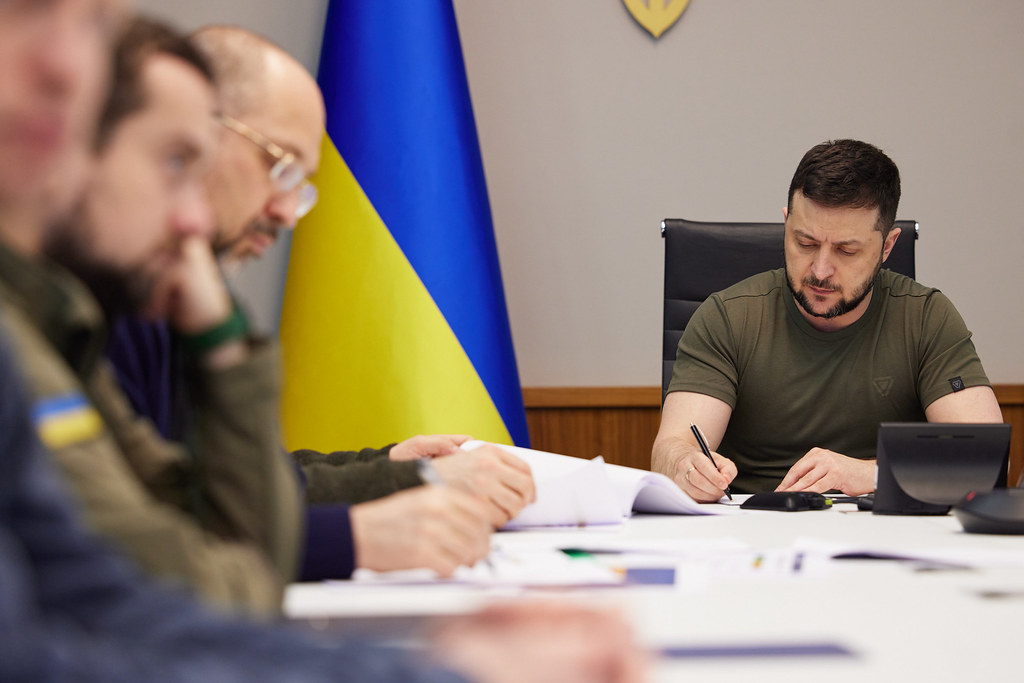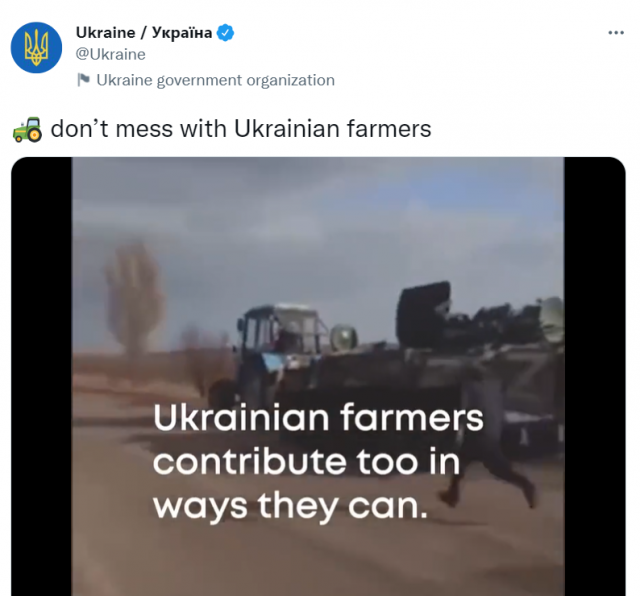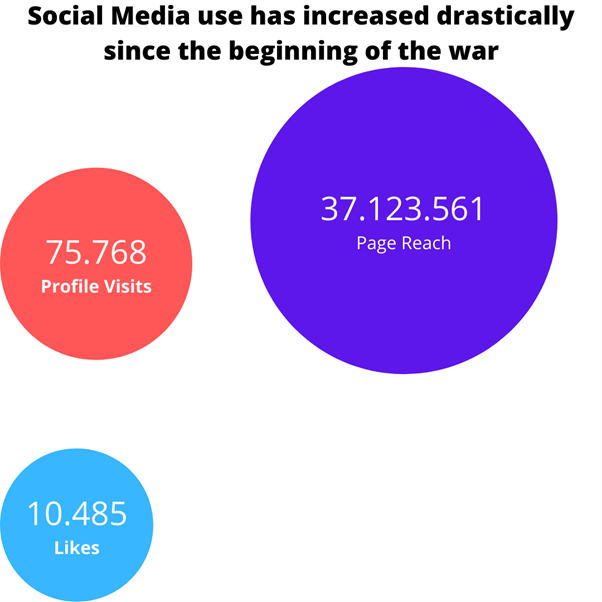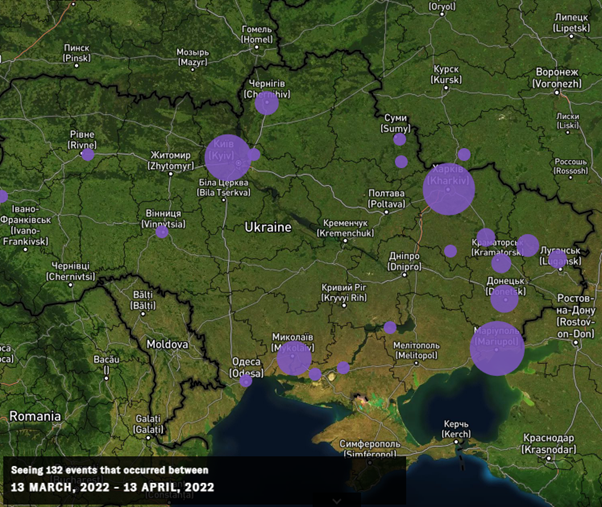
communication
Social Media: Changing The Landscape of Politics and Warfare – the case of the war in Ukraine
As early as 2008, we saw the increasing influence of social media on the political landscape: Barack Obama used Twitter to launch a grassroots campaign that helped propel him into the Oval Office.
In the following years, a number of popular uprisings across the world began to be labelled “Twitter Revolutions”, as the social network provided young galvanized masses a platform for coordinating; the so-called Arab Spring of 2011 represents the most prominent example. The wave of protests stretching across North Africa and the Persian Gulf were animated by a tech savvy youth and common internet users striving to break from the past.
Almost 15 years later, we find the digital landscape to have radically evolved. Hotbed of disinformation, but also primary tool for many to access news and participate in public debates, social media count around 4 billion users worldwide, hundreds of millions more users than a decade ago. In the meantime, new platforms targeting specific audiences and providing new ways of conveying information have emerged.
The Ukrainian President Volodymyr Zelenskyy has been playing a crucial role in the narration of the conflict as well; the shrewd use of the communication tools has earned him the sympathies of many Western and Ukrainian citizens.
The 2022 Invasion of Ukraine: what role for social media?
A combination of factors are making pundits wonder if we are witnessing the first “social media war”. The term had been already employed to refer to past conflicts, but the ongoing war presents to us a first of a kind example.
Scale is a primary element. Russia and Ukraine are two of the most populous European countries, and millions of citizens actively use social media on a daily basis. The 2020 Nagorno-Karabakh war between Armenia and Azerbaijan was widely covered by social media users, but the scale was extremely limited, as the population of both countries combined is just around ¼ of Ukraine’s. The right to access online platforms is also an important factor. Indeed, the Ukrainian government is not restricting internet access like authoritarian governments did during the Arab Spring and Russia is currently doing. Conversely, Ukrainians are taking advantage of any communication tools available to show the consequences of the aggression to the rest of the world. Such combination of factors is allowing a huge amount of content to reach our phones directly from the battleground.
The hybrid instant messaging app and social network Telegram is taking the centre stage in this virtual struggle. Following the invasion, the channel @COVID_Ukraine, adopted by the Ukrainian government to keep the population updated on the pandemic, was renamed @UkraineNOW and repurposed to funnel useful information regarding the war (such as the position of air-raid shelters) and to counter Russian disinformation. In two weeks, the members of the group more than doubled, reaching 1,1 Million compared to around 500.000 before the war.
The Ukrainian President Volodymyr Zelenskyy has been playing a crucial role in the narration of the conflict as well; the shrewd use of the communication tools has earned him the sympathies of many Western and Ukrainian citizens and his approval rating has reached 90% from a mere 31% before the invasion. Whilst this is certainly also the consequence of the ‘rally-round-the-flag‘ effect, his disruptive approach to communication, which combines the use of amatorial videos, traditional press releases and virtual public appearances at pro-Ukraine rallies has turned the tide of the information warfare in Ukraine’s favour. The President can directly address the 1,5 million members his Telegram group through basic videos, breaking in some way the media barriers and demonstrating his close ties to the population.

Innovative communication strategies are also adopted by other governmental channels. The official Twitter channel of Ukraine, followed by 2 million users, has been taking advantage of memes to mock the Russian army and rally support around the country. One example is the meme of Ukrainian farmers stealing tanks with their tractors.

Countless media projects, twitter accounts and newspapers are using viral content to meet the increasing demand for information on the conflict. The Facebook page My Country? Europe. represents a striking case-study; since the start of the conflict, the page has witnessed a surge in post impressions and engagements which it never experienced since its establishment in 2014. With just 120.000 followers, the page has reached 37 million users, of which more than 5 millions engaged with its content through reactions, shares and comments.

The current conflict in Ukraine is providing the OSINT community massive amounts of open source material to work on.
A minefield of public information: Open Source Intelligence (OSINT) and Social Media
Open Source Intelligence (OSINT) refers to the collection of data from open sources to produce valuable information. While open sources are not confined to the online realm, the increasing amount of data available on social networks is making OSINT a crucial and increasingly common practice to be employed by private citizens and public authorities. Online open source investigations started to gain traction in the early 2010s; it is no coincidence that the emergence of this phenomenon run in parallel to the exponential growth of social media.
Open Source Intelligence has proven its positive value in a number of occasions. For instance, the investigative team of Bellingcat was able to trace back the 2014 downing of the MH17 flight in Eastern Ukraine to separatists and Russian officials and to link Sarin gas poisonings during the Syrian civil war to government forces. Such investigations combine the use of different tools such as reverse-image search engines, satellite imagery platforms and social media scouting. The public availability of such data makes the conclusions achieved by OSINT investigations verifiable by any person equipped with an internet connection and the time to carefully inspect the data.

The current conflict in Ukraine is providing the OSINT community massive amounts of open source material to work on. To give an example, the website Oryx keeps updated records of both sides’ military equipment losses, relying on videographic evidence posted on social media by troops and civilians on the ground. While the figures are certainly incomplete, they are more reliable compared to the official statements from the parties involved in the conflict which have an interest in downplaying their figures.
Meanwhile, Bellingcat has declared that all the information collected by its volunteers will be made available to the International Criminal Court to support its investigations on potential war crimes.
There is no doubt that warfare has spilled over the virtual domain. Armies of bot accounts push false narratives and prop up specific messages to change public opinion; popular TikTok influencers have become instruments to spread online propaganda; governments employ memes and other type of viral content to win the hearts and minds of online users.
However, the current conflict shows that social media can enable citizens living through dramatic experiences access critical information and generate useful evidence that may be employed in future criminal proceedings. Social media has radically transformed the landscape of politics and warfare, and its role in the current conflict will keep researchers and communication analysts busy for years to come.
